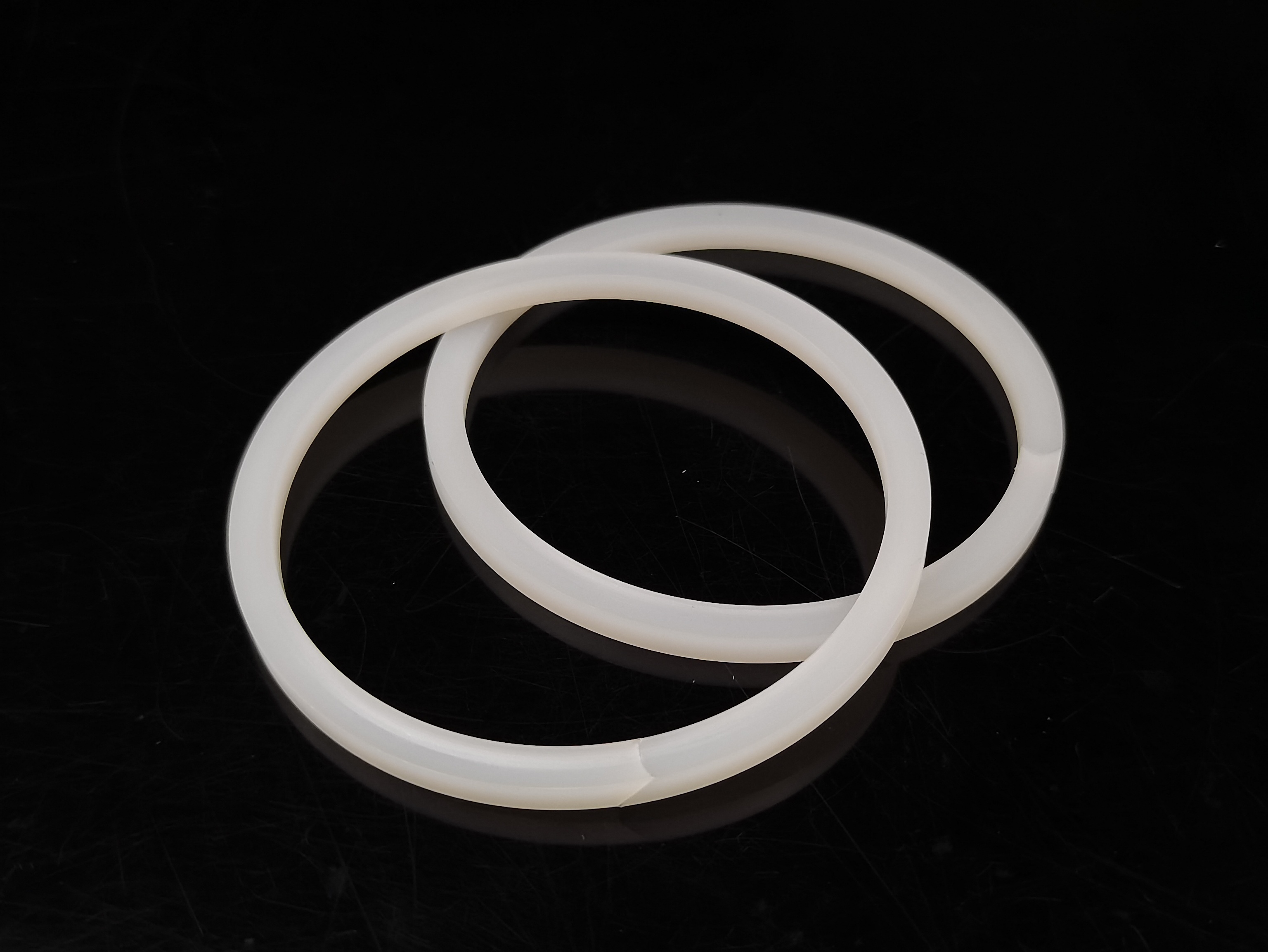Under extreme conditions such as frequent impact in mining machinery hydraulic cylinders, corrosive medium erosion in chemical pumps, and high-pressure cleaning in food equipment, conventional seals typically fail within 3-6 months. Ultra-High Molecular Weight Polyethylene (UPE) seals extend equipment service life by 2-5× in comparable environments, demonstrating their transformative value in modern industrial sealing.
Multidimensional Performance Matrix: Core Advantages of UPE Seals
1. Wear Resistance: Ultimate Defense Against Industrial Abrasion
When conveyor bearings encounter abrasive particles (7 Mohs hardness):
- UPE wear rate: ≤0.03mm/1000h
- Standard PTFE wear rate: 0.25mm/1000h
- NBR seals exhibit through-thickness failure
UPE chains (MW>3.5 million) form fiber-reinforced molecular entanglements that resist abrasive shear forces, making them ideal for slurry pump sealing rings and excavator hydraulic rod seals.
2. Chemical Resistance Matrix (vs. Common Sealing Materials)
| Medium | UPE | PTFE | FKM | Nylon 66 |
|---|---|---|---|---|
| Strong Acid (50% H₂SO₄) | ★★★★★ | ★★★★★ | ★★★☆☆ | ★★☆☆☆ |
| Strong Alkali (40% NaOH) | ★★★★☆ | ★★★★★ | ★★☆☆☆ | ★★★☆☆ |
| Organic Solvent (Acetone) | ★★★★☆ | ★★★★★ | ★☆☆☆☆ | ★★☆☆☆ |
| Chlorides (Seawater) | ★★★★★ | ★★★★★ | ★★★★☆ | ★★☆☆☆ |
| Hydrogen Peroxide (30%) | ★★★★☆ | ★★★☆☆ | ★☆☆☆☆ | ★★☆☆☆ |
Note: 5 stars = optimal resistance
Case Study: UPE sealing rings last 18 months in electroplating equipment (chromic acid/cyanides), while FKM seals fail within 5-7 months.
3. Tribological Advantages: Key to Energy Efficiency
UPE exhibits static (0.08-0.12) and dynamic friction differential of 0.02 — significantly lower than PTFE’s 0.06. This reduces:
- Hydraulic system startup pressure by 40%
- Operational energy consumption by 12-18%
- Eliminates hydraulic cylinder creeping
4. Extreme Environment Adaptation: -196°C to Impact Loads
At cryogenic temperatures:
- UPE retains >85% impact strength at -150°C
- PTFE embrittles below -80°C
Under 35MPa pressure pulses: - UPE absorbs 90% impact energy
- Polyurethane (PU) seals undergo permanent deformation
- System noise reduced by 12dB(A)
Lifecycle Cost Comparison Matrix
| Evaluation Metric | UPE Seal | NBR | PTFE | Metal Seal |
|---|---|---|---|---|
| Unit Cost Factor | 1.8x | 1.0x | 2.5x | 4.0x |
| Replacement Cycle | 24-36 mo | 3-6 mo | 12-18 mo | 60+ mo |
| Downtime Cost | ★☆☆☆☆ | ★★★★☆ | ★★☆☆☆ | ★★☆☆☆ |
| Leak Risk Index | 4% | 32% | 18% | 8% |
| 3-Year TCO | 1.0x | 3.2x | 1.8x | 2.5x |
Data: Heavy Machinery Group Seals Selection Report 2023
Engineering Selection Guidelines
Use UPE seals for:
- Severe Abrasion: Hydraulic systems with >15% mineral particle content
- Broad Temperature Cycling: -50°C to +80°C environments
- Corrosion + Wear: Chemical pump valves, electroplating equipment
- Low Friction: Precision servo-hydraulic systems
- Cleanroom Applications: Pharma/food-grade contaminant-free sealing
Technology Evolution: UPE Composite Seals
Advanced UPE-PTFE composite seals combine:
- UPE wear-resistant core (load-bearing)
- PTFE low-friction surface (sealing lip)
- 40% longer lifespan than pure UPE
- Startup friction reduced to 0.05
Conclusion: Lifecycle Revolution in Maintenance Economics
UPE seals deliver threefold value:
- Material Revolution: 6-8× greater wear resistance vs. conventional materials
- Cost Transformation: 40-65% lower lifecycle maintenance costs
- Reliability Upgrade: Key equipment failure rates reduced to 25% of baseline
In emerging fields like lithium battery separator production, deep-sea mining systems, and liquid hydrogen storage, UPE sealing technology continually redefines industrial reliability standards, enabling “decade-long maintenance-free” operational targets.
Post time: Jul-03-2025

